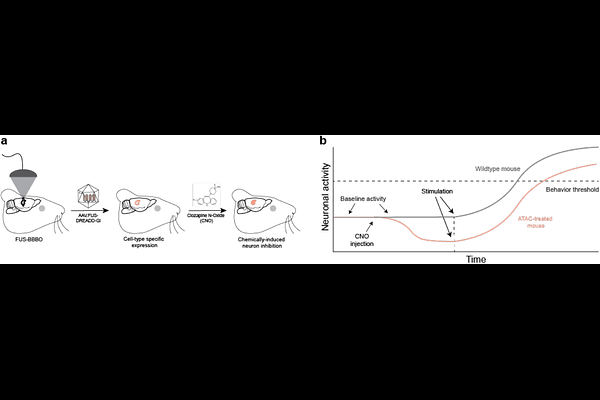Noninvasive Control of Seizure Threshold with Acoustically Targeted Chemogenetics

Noninvasive Control of Seizure Threshold with Acoustically Targeted Chemogenetics
Li, H.; Nouraein, S.; Lee, S.; Link, S. S.; Raisely, E. K.; Szablowski, J. O.
AbstractMany neurological and psychiatric diseases are characterized by pathological neuronal activity. Current treatments involve drugs, surgeries, and implantable devices to modulate or remove the affected region. However, none of these methods can be simultaneously non-invasive and possess site- and cell type specificity. Here, we apply a non-invasive neuromodulation approach called Acoustically-Targeted Chemogenetics, or ATAC, to increase the seizure threshold. Here, the ATAC approach used a multi-point focused ultrasound to transiently open the blood-brain barrier of the whole hippocampus and transduce pyramidal neurons with engineered G-protein-coupled receptors to inhibit their activity. To express the engineered receptors in the mouse hippocampus, we used a recently engineered viral vector optimized for ultrasound-based gene delivery to the brain, AAV.FUS.3. In a mouse flurothyl seizure model, we showed successful gene delivery throughout the hippocampus, a significant neuronal activity inhibition as evidence by an increase in seizure threshold. Finally, we benchmarked these effects against a clinically prescribed drug that acts without spatial precision.